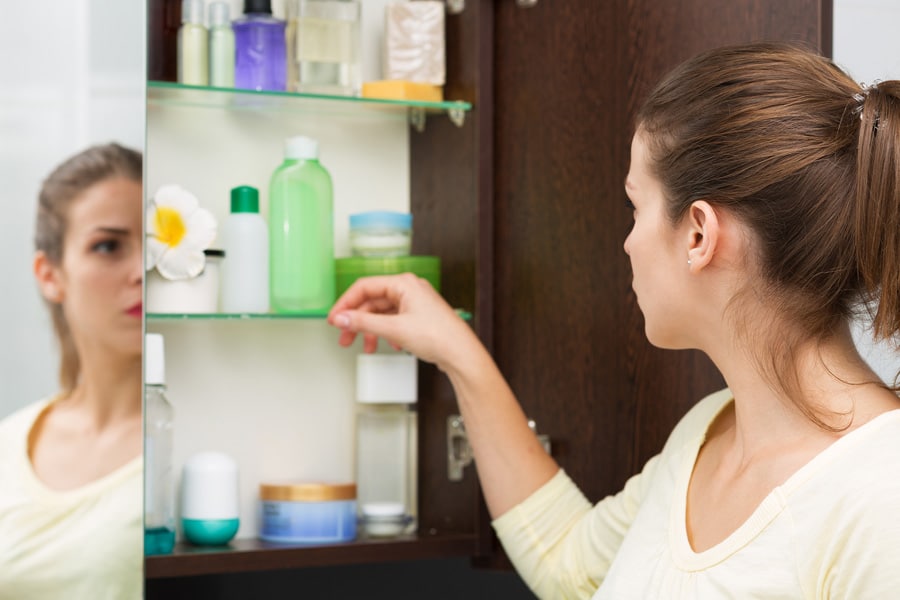Micro suction is the safest and most effective method for removing excess and impacted ear wax.
However, you may have heard of other alternative remedies for ear wax removal at home. Given how sensitive our ears and ear canals are, it is important to understand how safe each of these home remedies can be and whether they work.
Drops used at home include commercial products, olive oil, or a solution of sodium bicarb in water and glycerol. Click here to learn more about softening drops and how to use them.
It is important to note that ear wax softening drops can only be used if there is no perforation (hole) in the ear drum. Seek advice from your doctor if you have a known hole in the ear drum or have had ear surgery previously to see if this remedy is suitable for you.

Flushing Ears With Warm Water
Some people may recommend flushing your ears with warm water to remove excess ear wax. However, this method is unlikely to work on hard and impacted wax. If you have a hole in the eardrum, have had previous ear surgery, or a current or suspected infection, do not flush your ears with water.
Ear Syringing
Ear syringing is a method that requires water to flush the ears. It is less effective and poses more complications than our preferred method of micro suction. MIcrosuction is a dry procedure and can be used on people who have perforated eardrums, diabetics, and people with depressed immune systems.
Ear Candles
Ear candles are an unproven home remedy for ear wax removal that should be avoided. Studies have shown that ear candles do not work effectively to remove ear wax and can damage your ear canal or ear drum through hair fires, burns and hot wax. Placing the candle in the ear may also push wax further down your canal, leading to a worsening of symptoms.
Cotton Buds
Never insert a cotton bud into your ear. The use of cotton buds and other implements in your ear (such as bobby pins, toothpicks, and ‘corkscrew’ type removers) may push wax further down the ear canal, scratch and lacerate the ear canal, and can damage your eardrum. This can lead to hearing loss, dizziness, ringing and other symptoms of ear injury.
Olive Oil
Olive oil is a natural alternative to chemist-bought wax softening drops. It can work to soften ear wax, making it easier to remove using micro suction. However, on its own, olive oil is not an effective wax removal method. If you are trying olive oil, use it only at room temperature. If you have a hole in your ear drum, do not use any drops in the ear and seek professional advice. Those who have had ear surgery, including grommet insertion, or those with a current ear infection should seek advice from a medical professional before using drops.
Hydrogen Peroxide
Hydrogen peroxide is an active ingredient in liquid form which is used in many ear wax softening drops. It is also available as a standalone product (hydrogen peroxide 3%) and can be used on its own to remove or prevent the build-up of excess earwax. Hydrogen peroxide works by breaking earwax down through the release of gas/bubbles. Hydrogen peroxide is often combined with a softening agent such as glycerin or oil in order to increase its effectiveness in breaking down excess earwax. At Earworx, we recommend the use of over-the-counter ear wax softening drops prior to micro suction.
How Home Remedies for Ear Wax and Blocked Ears Work
All home remedies carry some risk. Your ears are incredibly delicate and can be prone to infection and damage. Some of the methods listed above could worsen your ear condition or lead to unwanted complications. Read below for our summarised do’s and don’ts for earwax removal.
Do:
- Understand that earwax is normal: Ear wax that does not block the ear canal or cause symptoms should be left alone
- Familiarise yourself with the symptoms of impacted wax: These include decreased hearing, a feeling of fullness or blockage, ringing in the ears, itching, and a decrease in hearing aid function
- Seek professional help when impacted wax is unable to be removed: Manual removal may be required using small instruments and suction, also known as micro suction and curettage. This is the safe and effective technique used by Ear Nose and Throat specialists across Australia and is the same procedure performed by qualified Registered Nurses at Earworx. Ear wax should always be softened prior to the procedure unless unsafe to do so (if you have a hole in your ear drum or previous ear surgery). Manual removal using water irrigation at your local GP clinic may also be available but is not suitable for everyone and is no longer performed at all clinics
- Seek medical advice if you experience bleeding, sudden hearing loss or pain that you are not sure is related to wax. These are less typically related to wax impaction and may a sign of other conditions
Don’t:
- Don’t over clean your ears: The ear is a self-cleaning organ and most of the time wax makes its own way out of the ear without any special treatment.
- Use cotton buds or other implements in the ear: You may push wax further down and lacerate the ear canal
- Use ear candles: They do not work effectively and may injure the ear canal and drum
For safe and effective ear wax removal, you should turn to ear wax softening drops or manual removal such as micro suction to remedy blocked ears and excess wax.
Micro suction is completed at our dedicated ear wax removal clinics. Small instruments and gentle suction are used to remove wax from the ear canal without the need to touch the ear canal wall or drum which is a common cause of damage. Wax is removed by qualified Registered Nurses who are experienced in the procedure.
Contact Earworx and make a booking today.
Sources:
Schwartz et al 2017, Clinical Practice Guideline (Update): Earwax (Cerumen Impaction), Otolaryngology-Head and Neck Surgery Vol 156 (IS) S1-S29
